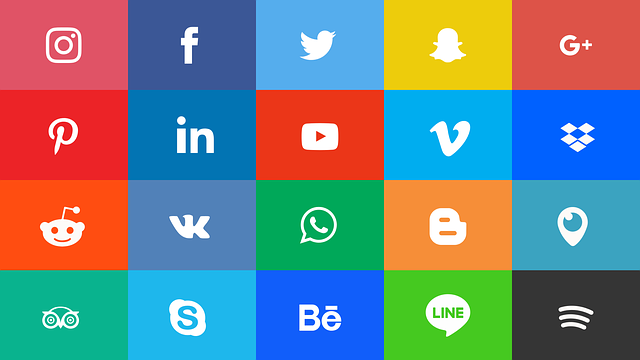This article is intended as a reference and does not represent a guarantee or implication that NYFA graduates or others reading this article will obtain a job in their chosen career nor can salary be predicted since each job and the salary associated with it depends on the individual attributes of each applicant and on circumstances not within the control of any applicant.
There are very few fields as diverse as graphic design, an industry in which no single role is clear cut and jobs often overlap (even with work that isn’t graphic design related).
That’s exactly what you’ll find in our below list of graphic design jobs, which we hope will help demystify some of the terms and provide a little bit of guidance as to how to get a graphic design job.
But it bears repeating: unlike our previous job glossary lists (such as the guides to jobs in film and broadcast journalism), rarely are two individual graphic design jobs alike and there’s a lot of crossover between duties.
We’ve also provided an approximate difficulty scale which indicates not the technical requirements of the job, but how difficult it is to get full time, paid work. Without further ado…
Jobs in Graphic Design: Career Paths
Print Designer

The debate continues to rage as to whether designing for print is a dying art form (and it is true that jobs in this sector have diminished), but creating artwork that is intended solely for printed materials is still in demand. It’s a highly technical field, requiring in-depth knowledge of both traditional print techniques and their integration with contemporary digital advancements.
Print Designer Career Path: While ‘print designer’ is a blanket term covering a wide number of subsets (such as package designer below), those looking to acquire print design jobs are nearly always required to have attended graphic design school beforehand. Proficiency in the Adobe suit and particularly InDesign Quark Xpress are also important, before hitting the classifieds.
Pros: There’s a recognizable feeling of merit to work solely for print these days, and once you’ve mastered the art, you can tackle pretty much any job in the industry. Regular, 9 to 5 hours are also common.
Cons: The number of print jobs is dwindling rapidly – those working for book, newspaper and periodicals can expect a 16% decrease in jobs between 2012 and 2022 (according to the Bureau of Labor Statistics).
Difficulty: 7/10
Web Designer

Unlike a print designer, a web designer deals specifically in graphic elements intended for viewing on a desktop or mobile device. Given the hugely varied nature of the work that falls into this category, it’s a broad term that covers a large swathe of the industry and is often conflated with web development; for the purposes of this entry, we’re going to focus specifically on graphic web design rather than coding.
Web Designer Career Path: While graphic design school and related qualifications can offer a huge step up, a lot of web designers are self-taught and build up their portfolios gradually to score further work. As above, the ability to also code in a variety of language is massively beneficial.
Pros: A reasonable degree of creative control, plus opportunities to work either on a freelance basis or salaried depending on your preference.
Cons: It’s an extremely saturated market, so competition is high while the pay is low for what is actually a very skilled job.
Difficulty: 4/10
Logo Designer

To a non-graphic designer, it often sounds unrealistic that someone can make most (if not all) of their income through designing logos for companies, but there is a small yet lucrative niche in this area.
Logo Designer Career Path: Logo design is something many graphic designers will undertake from time to time, but to do it full time one should seek employment from an agency that is dedicated in offering this service. A good portfolio and prior experience will be necessary to get through the door.
Pros: Working at the top of the field, the rewards can be colossal. Extensive, all-expenses paid travel can be a perk when working with global, corporate clients.
Cons: It’s not the most varied graphic design job in the world.
Difficulty: 9/10 (for full-time, high paying logo design work)
Package Designer

While the digital age is arguably hampering print design, there’s one job within that industry that is practically immune from downturn: people will always need products, and products will always need packaging.
To boot, we’re not likely to ever see a time in which everything is put into generic gray boxes, so the demand for talented designers to create an alluring and unique package design is usually quite high.
Package Designer Career Path: Much the same as any other type of graphic designer, though a knowledge of 3D modeling is highly preferential.
Pros: You’ll see your good work everywhere…
Cons: … and nobody will know it was you.
Difficulty: 7/10
Advertising Designer

Either working freelance via a marketing agency or in a salaried position for a company, advertising designers work closely with copywriters, art directors and other creative personnel to bring an advertising campaign to life (and according to a client’s brief).
Advertising Designer Career Path: Those working in an advertising or marketing environment typically start off from junior positions or internships within an agency before working up the career ladder. Naturally, time spent at graphic design school accelerates this process though it’s not unheard of for, say, a copywriter within a marketing company to learn on the job.
Pros: Fairly stable work and no two days are usually the same.
Cons: You’ll often find yourself stuck between a rock and a hard place – the rock being nightmare clients, and the hard place being their impossible demands.
Difficulty: 6/10
Branding Designer

With a lot of crossover with advertising design and incorporating logo design (and sometimes packaging), branding designers have a huge degree of responsibility given that they’re in charge of how a brand is perceived by the public. If the role doesn’t also govern advertising itself, the branding designer will also typically assume those duties also.
Branding Designer Career Path: Those with senior branding positions often start off their careers as graphic designers within a marketing environment, working towards the position over the course of many years. Graphic design school is almost mandatory, and a strong knowledge of best marketing/communication practices beneficial.
Pros: The salary for a brand designer reflects the level of seniority, and the satisfaction of a branding job well done can be exhilarating.
Cons: As with advertising, if you’re not working for one specific company you can often find yourself dealing with less-than-desirable clients. You’ll also find yourself having to repeatedly explain to people why your job is more important and nuanced than they make out.
Difficulty: 8/10
User Interface Designer

The need for user interface designers is becoming increasingly popular in recent times, with companies willing to pay top dollar for someone who is able to make the front-end of their website, app, or software look aesthetically pleasing and functional. This shouldn’t be confused with the “user experience designer,” although there is some crossover, and in some companies the same role is held by the same person.
UI Designer Career Path: Mainly portfolio driven, with UI designers usually working freelance on a variety of projects before falling into a more permanent role. It’s not uncommon for UI designers to have a strong background in coding as well as digital graphic design techniques.
Pros: If you’re the kind of graphic designer who can spend hours focusing on a single detail and how it might impact the end user, this is definitely a job for you.
Cons: Having to explain to others the difference between UI and UX.
Difficulty: 10/10
